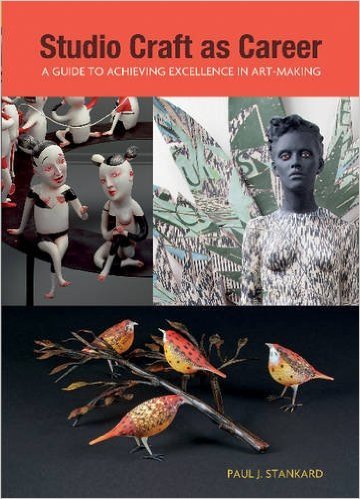GLASS Quarterly Hot Sheet: You've already published an autobiography, No Green Berries and Leaves (McDonald & Woodward, 2007), and a manual for artists entitled Spark the Creative Flame (McDonald & Woodward, 2013). What inspired you to come out with Studio Craft as Career (Schiffer, 2016) and how does it differ from your first two books?
Paul Stankard: Well, my first book was a memoir, and the second one was a guide to finding and renewing motivation. But I decided to write this book because I was hearing so many people trying to make it as artists who believed it was all about who you knew. I wrote this book to say 'Wait a minute, it's not who you know, it's all about the work.' I wanted to give people a way to educate themselves about what excellence is, and to hand over tools for self-directed learning. People who read this book will hopefully think about how they need to see themselves in competition, not only with the best work in the contemporary realm, but also the best work that has come before. It's about studying the best work that's been done in your field and engaging in a dialog with it — to understand it, and to respond to that work in your own unique way.
GLASS: You're an active figure in the glass world, where you've been teaching, making your own work, and engaged in social media. Was it difficult to find the time to write a book?
Paul: I was treated for prostate cancer in 2014, and I was out of commission for about six months. I had lots of energy but wasn't able to work in the studio. So I found working on the book to be a great way to stay within the creative realm when I wasn't able to sit at the bench.
GLASS: It seems the new book does have some overlap with Spark the Creative Flame, which also offers advice to aspiring artists with examples of what worked for you in your career. Do you agree?
Paul: There is some overlap, but I expand on the experiences that shaped me and my career in the new book, and I want to share my latest insights into what motivates me. It's about having standards and pursuing excellence.
GLASS: It has a bit of a textbook look to the design of the book. Is that intentional — do you hope this book is assigned to students in college?
Paul: I designed the book for independent artists, but also as a resource for undergraduate courses in fine art and craft materials. This can work as an introduction to American crafts, and also as a study guide. There's a section in the book where I publish works by 50 artists in all types of material, and describe what it is about each that I appreciate. It's an example of how artists have to educate themselves about what excellence is, and an instructor might assign a student to choose a number of these 50 and do further research. It's about developing self-directed learning, and continually seeking ways to take your work to the next level.
GLASS: Do you feel this completes your foray into book publishing or are you already working on your next title?
Paul: It is a lot of work, and with Studio Craft as Career just having been published, I’m in a recovery mode right now. But in fact, I do see myself writing another book — this one might be about borosilicate glass and its applications in science and art. But right now I'm hoping to tell as many people about the book, and encourage every student or artist to identify the masters in the area they’re interested in – clay, wood, glass – and compete with their work, look at how their work has advanced the history of the category. It's very exciting to see a new generation of artists getting involved with studio craft and taking the field in new directions.
Editor's Note: Andrew Page offered unpaid editorial advice to Paul Stankard on an early draft of his manuscript.



